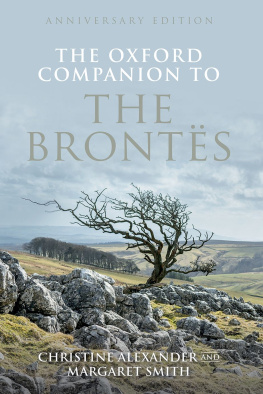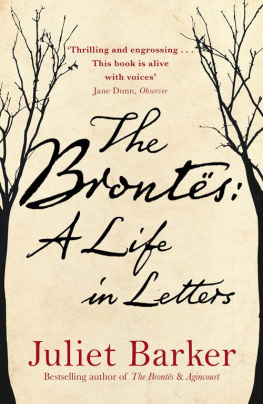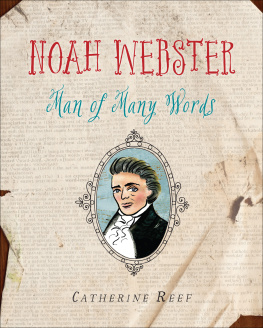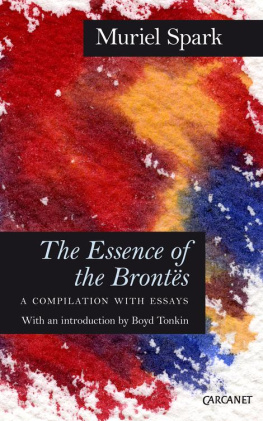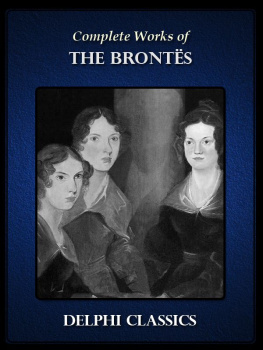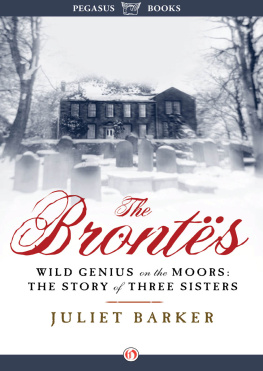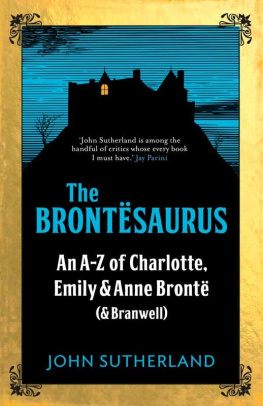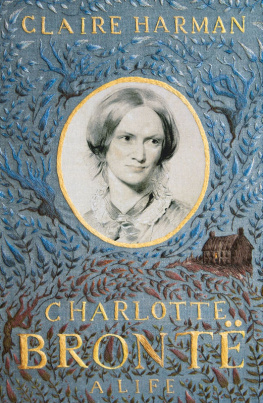While most e-readers can display special characters (such as and ), many cannot search for words containing them unless the special characters themselves are typed into the search box. If you are unable to type these characters, please browse for your term using the .
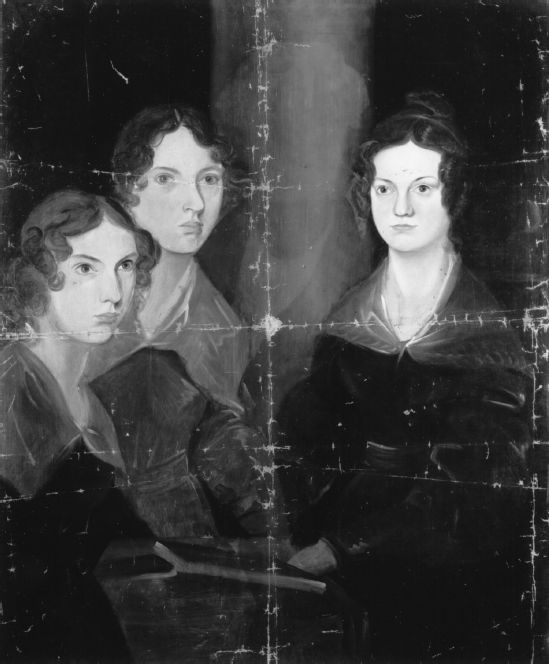
The Bront sisters, oil painting by Branwell Bront, c.18334.

Great Clarendon Street, Oxford, OX2 6DP, United Kingdom.
Oxford University Press is a department of the University of Oxford. It furthers the Universitys objective of excellence in research, scholarship, and education by publishing worldwide. Oxford is a registered trade mark of Oxford University Press in the UK and in certain other countries
Oxford University Press 2003, 2006, 2018
Preface to the Anniversary Edition Claire Harman
The moral rights of the authors have been asserted Database right Oxford University Press (maker)
First edition published 2003
First published in paperback 2006
Reissued 2018
Impression: 1
All rights reserved. No part of this publication may be reproduced, stored in a retrieval system, or transmitted, in any form or by any means, without the prior permission in writing of Oxford University Press, or as expressly permitted by law, by licence or under terms agreed with the appropriate reprographics rights organization. Enquiries concerning reproduction outside the scope of the above should be sent to the Rights Department, Oxford University Press, at the address above
You must not circulate this work in any other form and you must impose this same condition on any acquirer
Published in the United States of America by Oxford University Press 198 Madison Avenue, New York, NY 10016, United States of America
British Library Cataloguing in Publication Data
Data available
Library of Congress Control Number: 2018933077
ISBN 9780198819950
ebook ISBN 9780192551719
Printed and bound by CPI Group (UK) Ltd, Croydon, CR0 4YY
Links to third party websites are provided by Oxford in good faith and for information only. Oxford disclaims any responsibility for the materials contained in any third party website referenced in this work.
In memory of
Rebecca Mary Alexander
Acknowledgements
This volume owes much to the many scholars who have worked in the field of Bront studies over the years; without their dedication to research a reliable Companion would not be possible.
The Oxford Companion to the Bronts has been in production over a number of years and during this time many people have contributed assistance of various kinds. The authors would like to thank all those who have helped to make their task lighter and added to the accuracy of this volume. In particular we would like to thank the small band of contributors who gave so readily and so generously of their expertise: Carol Bock, Sue Lonoff, Victor Neufeldt, Herbert Rosengarten, Virginia Rushton, Patsy Stoneman, Beverly Taylor. Without their help the authors could not have completed the entries in time. The responsibility for the final form of the volume and for all errors and omissions, however, remains with the authors alone.
Christine Alexander would like to acknowledge with gratitude grants from the Australian Research Council and the Faculty of Arts at the University of New South Wales, that allowed her to check material in the UK and USA, and to consult with Margaret Smith in person.
We would like to express our thanks to Michael Cox, Pam Coote, Alison Jones, and Joanna Harris of Oxford University Press for their courtesy and patience, and to Rowena Anketell for her expert copyediting. Penny Boumelha, Kate Flint, John Maynard, Derek Roper, and Herbert Rosengarten also provided invaluable help in drawing up lists of topics. The assistance of the staff at the Bront Parsonage Museum, especially that of Ann Dinsdale and Rachel Terry, and of Carole Heaton, Principal Librarian, Reference Library, Calderdale Council, Halifax, was invaluable. We are grateful for the help of Robert and Louise Barnard, Aimee Chan, Margaret and Robert Cochrane, Christopher Cooper, Bob Duckett, Professor Michel Fuchs, Robin Greenwood, Alan Shelston, and Stephen Whitehead; of Andrew Brammer and Rowland Hilder for their vital technical support; and thankful to Kathryn Nedeljkovic for her editorial assistance.
Christine's greatest debt goes to her family, to her husband Peter and her son Roland; together they survived personal tragedy. They also endured the stress of publishing deadlines over several years: she is grateful for their moral support and practical assistance. Finally, the authors would like to acknowledge the importance of collaborative research in literature; although contributors and authors were spread between three continents, we have benefited from each other's expertise and encouragement. The planning, organizing, editing, and research for most of the entries in the volume has been a stimulating and rewarding experience for the authors that has confirmed their commitment to Bront studies.
Christine Alexander and Margaret Smith
PREFACE TO THE ANNIVERSARY EDITION
Ever since three revolutionary novels, Jane Eyre, Wuthering Heights, and Agnes Grey, appeared in 1847, attributed to three previously unheard-of people called Currer, Ellis, and Acton Bell, the reading public has longed to know more about the books and their authors. Who were these Bells? Could it be true, as one rumour had it, that they were a group of Lancashire weavers, and if so, how could three such powerful and original voices exist in one generation of a family, and arrive on the literary scene as it were from nowhere? The success of the books (and their notoriety) increased such speculation uncomfortably, and two years later, following the tragic early deaths of her siblings, Currer Bell made public some of the details of their lives; the mysterious brothers were in fact three sisters, the unmarried daughters of a Yorkshire parson.
If the author had hoped to dampen anyones curiosity by this revelation (made from behind the pseudonym), she was mistaken, and after Charlottes own death six years later, Elizabeth Gaskells dramatic biography of her, detailing the familys lonely and difficult upbringing on the edge of Haworth moor and their struggles to get published and recognized, stoked the flames still further. The popularity of Bront works and the Bront story have gone hand in hand ever since. They were among the first writers to attract mass fandom, a literary society, a cult: as soon as English Literature began to be taught nationally, they were on the syllabus; as soon as film and television existed, their books were filmed. Being, so unusually, a group of geniuses, the details of their lives and the context of their works has always seemed uniquely worth studying. They truly are unlike any other literary phenomenon.

